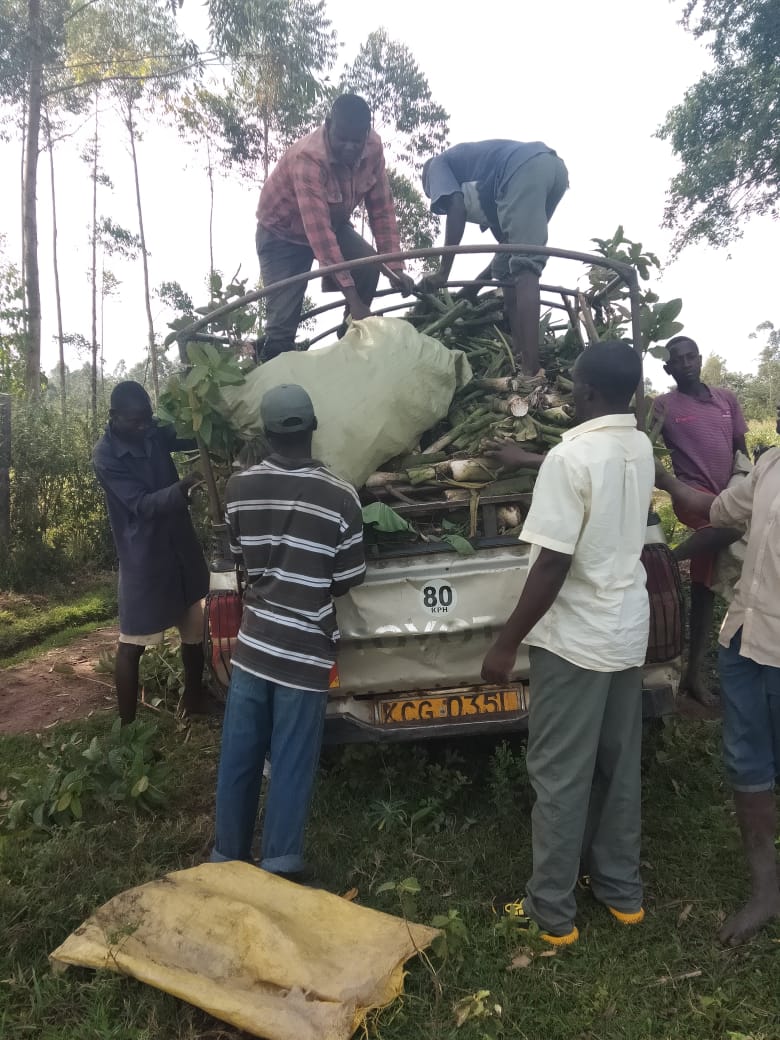
By George Munene
When Francis Faluma started growing arrowroots (nduma) in 2019, the farmer who lives in Matungu, Kakamega County, deep in the country’s sugarbelt received incredulous reactions from his neighbors. “Sasa ameanza kulima vitu za mababu wetu” was a common refrain he heard. “They now see trucks and pickups streaming in to pick arrowroots from my farm, and I have created jobs for hundreds of youths in the village...trust me, they are all rushing to buy the crop's seedlings to establish their own farms,'' he said.
Faluma refers to nduma as a ‘golden tuber’ with good reason. While his counterparts chase down sugarcane mill officials for delayed payments and grapple to convince themselves of a business case for selling a 50-kilogram sack of Irish potatoes for Sh1000; he sells 90 kilograms of his arrowroots for between Sh6,000 and 5,500. The earnings he quoted seem incredulous; “Conservatively I earn between Sh200,000 and 150,000 an acre which costs Sh30,000-20,000 to produce,” he said. For first-time farmers, this is pushed to Sh80,000 or Sh60,000 given 10,000 seedlings are required to establish an acre and cost 4/5 bob. He currently farms his arrowroots on 30 acres of leased land with each crop taking six months to mature. I'll pause while you take out a calculator and pick your jaw off the floor. Francis offered a word of advice; “Put down that pen, go back home and start growing this crop before everyone hops on the bandwagon.”
Related News: Mumias farmer mints millions supplying underserved arrowroot market
Related News: Agritech startup giving market to small-scale banana, pumpkin, sweet potato, arrowroot & yam growers
For Faluma who is a professional veterinarian working for the Kakamega County government, his sojourn into arrowroot farming was born out of an examined demand for the tuber crop that persists to this day. “Whenever ndumas were available in the market there would be a mad dash for them and they would all be gone”, he observed. Even now, he pointed out, if buyers from Nairobi were not teaming to his farm to scoop up his crop he could take his harvest to nearby towns like Kakamega or Bungoma and he would have emptied his truck in 30 minutes. There is also a growing demand for healthier food options to the usual carb and gluten-filled options. Tubers such as cassava for their part are not as palatable to most urban consumers.
Previously, Francis majored in watermelon farming and poultry keeping. Though his melon business had birthed favorable returns it had two drawbacks; diseases and pests were a hustle to contain and once the melons matured in 80 to 120 days they demanded to be harvested immediately—whether you had a ready market for them or not.
A 14 percent Value Added Tax (VAT) on feeds made commercial chicken rearing a financial high-wire act for anyone who had anything less than about 1000 birds.
“I started out on just half an acre expecting to make Sh20,000 but wound up raking in Sh100,000. I knew I had hit on a winning hand; I wound down my other agribusiness interests and went in full throttle into arrowroot farming,” he said. In a year's time, he had expanded to 10 acres.

With his sights set on even further expansion, he went into Equity Bank and requested a commercial agriculture loan. Initially, it was a hard sell; nduma growing is not farming sub-sector banks are asked to finance every day. To the bank's credit, once a loan officer went through his books and visited his farm—a stretched-out canopy of flopping green—four days later half a million shillings was deposited into his account. Francis just finished paying off the loan. “Whenever I am up for taking up another loan they told me not to hesitate. They don't need much convincing now,” he heartily remarked.
Related News: Youth earns Sh150,000 a season from arrowroot farming after abandoning maize production
Drawing inspiration from him and others who have taken the leap of faith and shown the potential in large-scale arrowroot farming, more farmers are refocusing their gaze on this ‘old’ and previously shunned crop. For Francis, who evangelizes the transformative impact the crop has had on his quality of life, this is welcome news and he doesn't anticipate the tuber crop’s market getting flooded any time soon. “Unlike most crops which mature in three months, on average, arrowroots take half a year. In well-drained soils, without the threat of them rotting, farmers have the discretion of leaving them in the shamba for up to 12 months,” he explained.
“With the strides, I have made in such a short time, reach me a year from now, I will be in a different stratosphere, '' he signed off.
Francis Faluma: 0724821186
















Comments powered by CComment